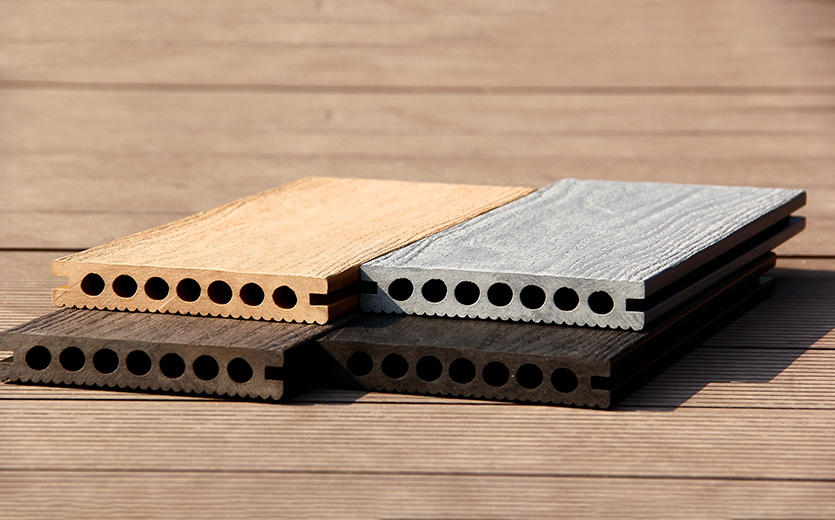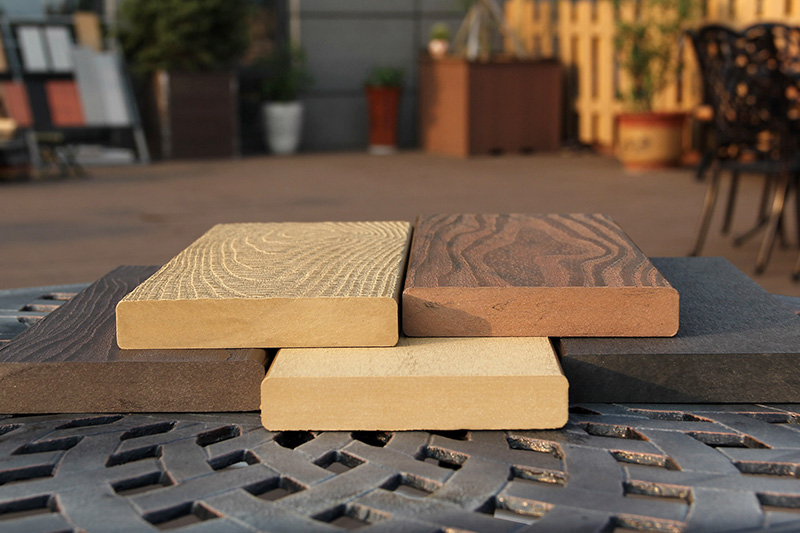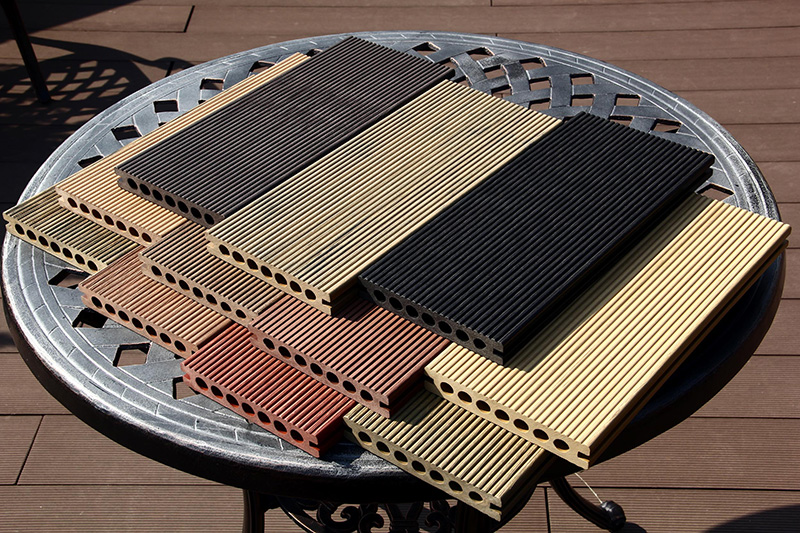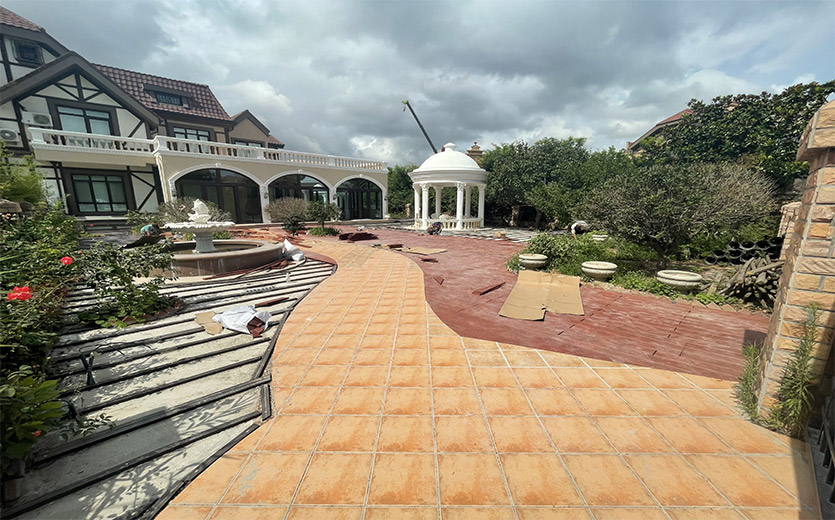
As you may have known, COOWIN® offers composite decking boards of hollow and solid profiles. Many customers may wonder, “Which one should I choose?” The short answer is “It depends on your needs”. Most composite deck board manufacturers in the US only make solid boards. Is it because solid decking is superior to hollow decking? No, the true reason is the ease and speed of manufacturing.
Solid composite decking, in fact, is easier and faster to extrude than hollow decking. Most WPC manufacturers wouldn’t bother exerting extra effort and spending more time making hollow boards. Boards of a hollow profile actually have their own irreplaceable advantages and today we’re going to dig deeper into it.
How Are Solid Decking Boards?
Here are some favorable characteristics of solid composite decking boards:
Solid core boards look more like real wood.
If you favor real timber-likeness over any other factors, solid composite boards are just for you.
They don’t require end caps.
One of the drawbacks of hollow boards is that they require end caps or fascia boards to cover the cavity. It’s to improve the aesthetics at board ends and avoid water retention. You absolutely don’t need that for solid composite decking.
Solid deck boards mean a quiet deck.
Compared to hollow decking, solid deck boards absorb more sound and help create a quiet outdoor environment.
More sturdy and durable.
We have to admit that solid composite takes more material to build, and as a result, it’s harder and sturdier, although hollow decking is also long-lasting.

Here comes the downsides of solid composite boards. They are heavy, which means it takes more effort to transport and install them. It’s also more likely for solid composite boards than hollow boards to contract and expand in extreme weather conditions. Another fact you should notice is that they’re more expensive.
How Are Hollow Decking Boards?
Advantages of Hollow Decking Boards:
They’re lightweight
Lighter boards are easy to carry, handle, and install, meaning that they save your time and energy.
They have less contraction and expansion.
Although solid composite decking is a bit more durable, they’re more likely to be affected by extreme temperature swings and moisture fluctuations. In extreme cases, it can lead to loosened fasteners and warping boards. Hollow decking, on the other hand, responds more mildly to that and can last longer in extreme weather conditions. If you live in an area where extreme moisture levels and temperature swings are expected, hollow decking is your best choice.
Economical and more cost-effective.
Hollow decking boards are about one-fifth cheaper than solid decking boards. Due to its lightness, it’s easier and faster to install, which means there can be no need for hiring a professional so you can expect to pay less in labor cost.
Wiring is easier.
If you enjoy outdoor lighting on your deck, hollow decking makes it easier to run the wires.

Hollow decking boards are less resistant to violent impact. In areas where heavy traffic occurs, solid decking boards that hold exceptionally strong against impact are recommended.
That’s all about the difference between hollow decking and solid decking. Time for a summary. Solid decking boards are suitable for situations where heavy traffic is expected and high impact resistance is required. Hollow decking, on the other hand, is the best choice when you want more flexibility in upgrading your deck and extreme weather conditions are the norm.

Feel the Charm of COOWIN® Decking!
Free samples are available at any time. Just fill out the form, we’ll get it sent as soon as possible.




Post a Comment